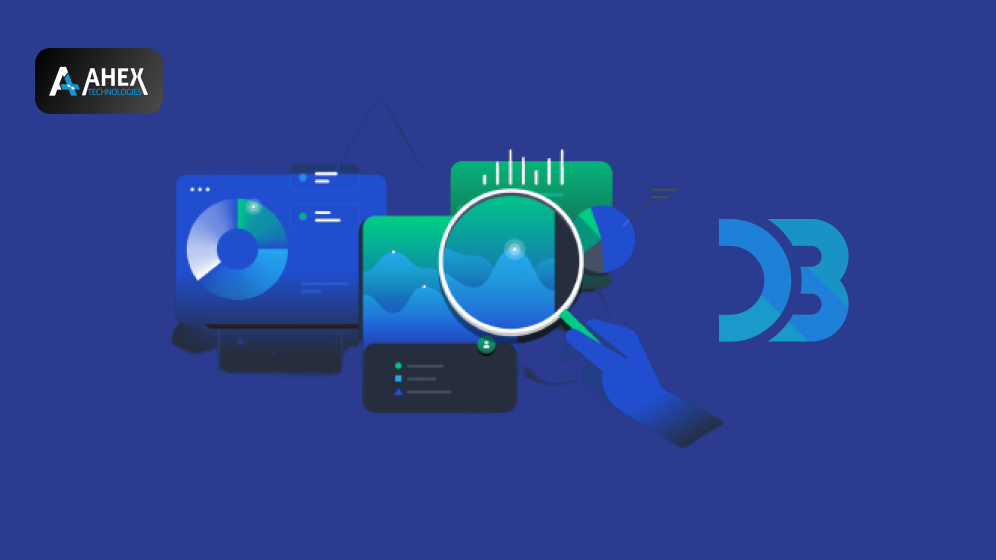
In today’s data-driven world, data visualization has become a crucial aspect of data analysis. From finance to healthcare, data visualization tools help businesses and organizations make sense of complex data sets, enabling them to make informed decisions. One of the most powerful data visualization tools available today is D3.js.
What is D3.js?
D3.js (Data-Driven Documents) is a JavaScript library used for creating dynamic, interactive, and customizable data visualizations on the web. It was developed by Mike Bostock, a software engineer at The New York Times, in 2011, and has since become one of the most popular data visualization tools available.
D3.js allows developers to bind data to HTML, SVG, and CSS elements, creating dynamic visualizations that can be easily updated and customized. D3.js is open-source and free to use, making it an accessible tool for businesses and developers.
Why choose D3.js?
There are several advantages to using D3.js for data visualization. Firstly, D3.js is highly customizable, allowing developers to create unique and interactive visualizations that meet their specific needs. Secondly, D3.js is compatible with a wide range of data formats and frameworks, making it a versatile tool for different industries.
Another advantage of D3.js is its flexibility in customization and interactivity. D3.js offers a wide range of interactive features, such as tooltips, zooming, and panning, that allow users to explore and understand data in greater detail. This flexibility makes D3.js ideal for creating visualizations that are both informative and engaging.
Examples of D3.js in Action
D3.js has been used by many industry leaders to create powerful and insightful data visualizations. For example, The New York Times used D3.js to create an interactive map of US census data, allowing readers to explore population density and demographics across the country. Airbnb also used D3.js to create a dynamic pricing tool, allowing hosts to set competitive prices based on market trends and demand.
How to Get Started with D3.js
Learning D3.js can be challenging, but there are many resources available for developers and businesses looking to get started. The D3.js website offers extensive documentation and tutorials, as well as a supportive community of developers and users. There are also online courses and books available that provide step-by-step guidance on using D3.js for data visualization.
To effectively implement D3.js, it’s important to have a clear understanding of the data being visualized and the goals of the visualization. It’s also important to have a solid foundation in HTML, CSS, and JavaScript, as D3.js relies heavily on these languages.
When using D3.js, it’s important to avoid common mistakes such as overcomplicating the visualization or using too much animation. These mistakes can result in a slow and confusing user experience, making the visualization less effective.
Challenges of using D3.js
While D3.js offers many benefits for data visualization, there are also challenges to using the tool. Learning and mastering D3.js can be time-consuming and challenging, especially for developers who are new to the tool. Additionally, D3.js can have compatibility issues with some browsers and devices, making it important to test and optimize visualizations for different platforms.
Finally, developing effective visualizations with D3.js requires significant time and resources, including expertise in design, data analysis, and development. Businesses and organizations must weigh the costs and benefits of using D3.js for their specific needs.
Conclusion
D3.js is a powerful tool for data visualization, offering unique benefits such as flexibility, customization, and interactivity. While it may have a steep learning curve and require significant resources, it has been successfully used by industry leaders in various fields to create impactful and insightful visualizations. For businesses and organizations looking to make the most of their data, D3.js is certainly worth considering as a tool for powerful data visualizations.
FAQS
D3.js is a JavaScript library used for creating dynamic, interactive, and customizable data visualizations on the web.
Data visualization is important in industries because it allows businesses and organizations to make sense of complex data sets, enabling them to make informed decisions.
D3.js is highly customizable, compatible with different data formats and frameworks, and offers a wide range of interactive features that allow for engaging visualizations.
Yes, D3.js has been used by industry leaders in various fields to create impactful and insightful data visualizations.
D3.js has a steep learning curve and requires significant resources, but there are many resources available for developers and businesses looking to get started.







